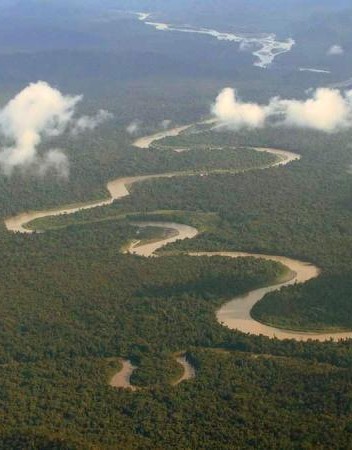Sepik River, Papua New Guinea
 |
Funding Agency: NSF Summary: A sediment budget was constructed for the shelf and slope influenced by the Sepik River plume in order to estimate the relative importance of surface and subsurface turbid flows versus transport through a near-shore submarine canyon in distributing river sediments across this narrow margin. 210Pb geochronology and inventories of Kasten cores are consistent with northwestward dispersal of sediment from the river mouth via surface plume and possible subsurface isopycnal transport. Sediment accumulation rates are highest on the upper slope just off of the Sepik mouth, decreasing gradually toward the northwest (~1 cm yr-1 in the western part of the study area), and decreasing abruptly offshore (<0.2 cm y-1 at 1200 m water depth). A first-order sediment budget indicates that only about 7-15% of the estimated Sepik River sediment discharge accumulates on the adjacent open shelf and slope. The remainder of the Sepik River sediment discharge presumably escapes offshore through a submarine canyon that extends upstream about 1 km from the river mouth. The divergent sediment pathways observed off the Sepik may not be uncommon along high yield collision margins of the Indo-Pacific archipelago, and perhaps represents the norm for most margins during Late Quaternary low sea-level conditions. |
Collaborators
University of Wisconsin: Chuck Nittrouer
Methods
A two-week cruise on the RV Lady Basten was taken April 1999 to conduct water-column and seabed sampling off the mouth of the Sepik River, Papua New Guinea. Two graduate students, Tara Kniskern and David Fugate, participated in the field study. Fifty-three box and kasten cores were recovered from shelf, slope and submarine canyon environments. Cores were analyzed using a suite of sedimentological and radiochemical tools.
Conferences/Publications
A special session was organized for the Febuary 2000 Ocean Sciences meeting in San Antonio where several presentations were made of preliminary findings from this project. Results are currently being published in a special volume of Continental Shelf Research.

